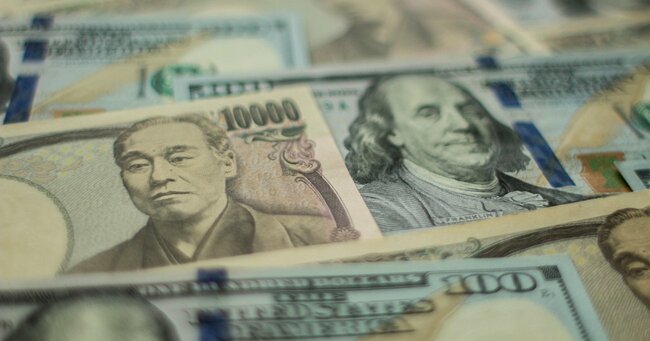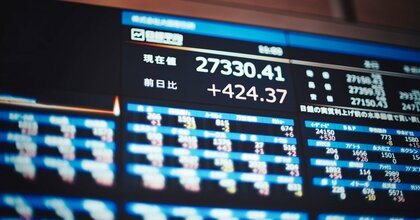Dovish BOJ
The Japanese yen is coming under broader depreciation pressure than last fall. While the U.S. dollar-yen pair is once again rising to year-to-date highs, it remains well below last year’s peak of around 152. On the other hand, major cross-yen pairs, such as the euro-yen, pound-yen and Swiss franc-yen, have already surpassed last year’s highs. As a result, the yen’s nominal effective exchange rate (NEER) is approaching the lows of last October.
This broad yen weakness reflects a renewed divergence in the monetary policies of the Bank of Japan (BOJ) and other major central banks, which have exhibited fresh hawkishness amid fading concerns over major banking systems and persistent inflation. This divergence in policy has led to changes in market positioning for both foreign and domestic investors that has driven the recent yen depreciation, in our view.
First, foreign speculative investors have likely unwound their long yen positions in recent months. Looking back, they reduced short positions and built up long positions in the yen from last fall after Japan intervened in foreign-exchange markets to buy yen in September and October, followed by the BOJ’s surprise move to widen the yield-curve control (YCC) band in December. The BOJ’s surprise policy change invited expectations for further normalization. That was especially the case under the new Governor Kazuo Ueda, who took office in April and was seen as critical of the YCC framework that had been adopted by his predecessor, former Governor Haruhiko Kuroda, in 2016.
With market expectations high for an early end to YCC, Ueda emphasized he would be patient, by linking policy changes to the inflation outlook. The BOJ expects inflation to decelerate to less than 2% towards the fall before rebounding. Additionally, concerns about the side effects of monetary policy impacting the function of Japanese Government Bond (JGB) markets have eased, reducing the urgency for additional policy adjustments. As a result, expectations for imminent YCC changes have faded in the markets, resulting in an unwind of long yen positions and even switching to short yen positions as a funding currency in carry trades.
Second, domestic investors have also likely contributed to the yen selling in recent months. Many domestic institutional investors, such as life insurers and banks, had planned to increase JGB investment this fiscal year, which began in April, assuming an early YCC adjustment would cause domestic yields to rise. However, as the BOJ stayed dovish through its leadership change, domestic yields remained unattractive, forcing them to look overseas for investment opportunities.
Foreign-exchange hedging costs have risen sharply over the last year as global rate hikes have made hedged foreign bonds, such as U.S. Treasury or European Government Bonds, mostly negative yielding for Japanese investors. That means some investors turned to unhedged foreign bond investments. Indeed, such a move was indicated in the investment plans for fiscal 2023 released by life insurers in late April.
So long as the BOJ retains its dovish policy stance, downward pressures on the yen will likely persist.
There are concerns in the market that further yen depreciation could result in foreign-exchange policy responses. As we rapidly approach the levels of last fall’s intervention (145-152), markets are facing more frequent verbal interventions by Japanese officials. If speculative selling accelerates the yen’s descent, the risk of another round of interventions could rise, capping the scope and speed of yen depreciation. Even then, so long as monetary policy divergence remains, so should the downward pressure on the yen, in our view.
Medium-term turnaround
Despite these near-term downside risks to the yen, the medium-term outlook for the currency is improving in our view, and we expect the dollar-yen pair to decline below 130 by the middle of 2024.
First, as global commodity prices unwind last year’s sharp rise, Japan’s trade balance has started to steadily improve thanks to lower energy import costs. Additionally, inbound tourism logged a sharp recovery to its pre-COVID levels despite a limited inflow of Chinese tourists. Travelers from China accounted for a third of Japan’s foreign visitors in 2019. These factors have resulted in a sharp rebound in the current-account surplus, which had temporarily fallen into a deficit last fall.
Second, the ongoing slowdown in the global economy is likely to increase demand for safe-haven currencies like the yen. While the yen seems to have lost its traditional negative correlation with equity markets last year due to a negative terms-of-trade shock and the dollar’s dominance, its safe-haven correlation has returned since the U.S.-European banking crisis in March.
Third, an eventual BOJ policy normalization poses upside risks to the yen. An end to YCC could drive a one-off yen appreciation against the dollar by 3% to 5%, according to our estimate. Furthermore, if markets begin to price in the eventual rate-hike path when the BOJ is thought to be more confident about the sustainability of inflation and wage trends, it could drive a more sustained rates-driven rally in the currency as BOJ policy converges with that of other major central banks.
In this regard, the extent of the decline and rebound of inflation this fall and the outlook for next year’s wage negotiations will be key. Tightening labor markets amid the post-COVID recovery, as well as peaking labor force dynamics with the slowing inflow of female and elderly labor supply, should continue to exert upward pressure on wage growth. By year-end, labor union demands for next year’s spring wage negotiations should also be known, providing a clearer picture for the wage inflation trend.
Shinichiro (Shin) Kadota is the FX Strategist at Barclays in Tokyo. Shin joined Barclays in 2008 and has worked in various teams covering Japanese banks, foreign bond investment for institutional investors, foreign exchange, and yen-rates markets. He graduated from UCLA in 2008 with a degree in International Economics. The views expressed here are his own.











